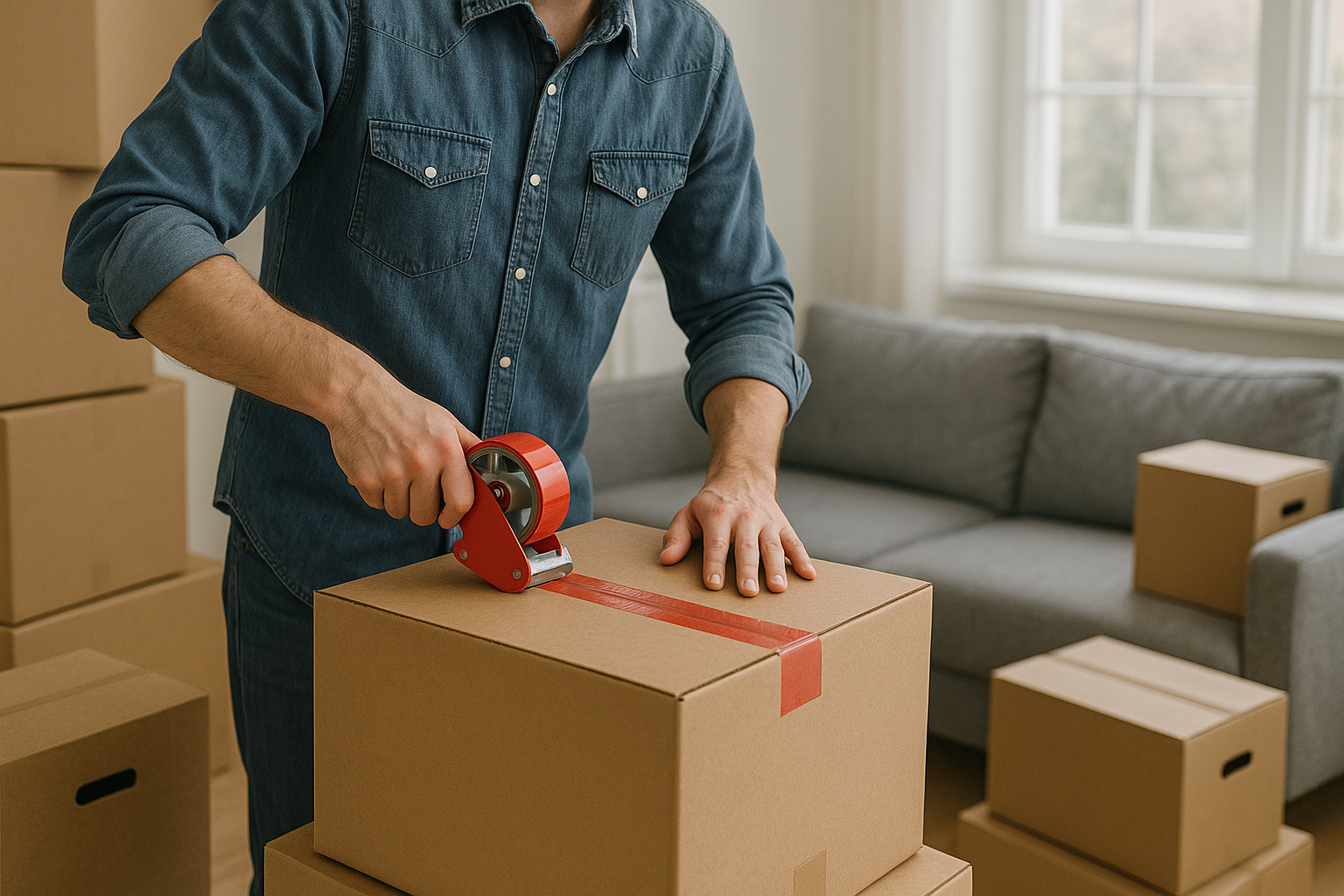
Introduction
Long distance moves are different from local relocations. They require more planning, better organization, and careful preparation to avoid delays, damaged belongings, and unexpected problems. Whether you’re moving across California or to another state, proper preparation makes all the difference between a stressful ordeal and a smooth transition. This comprehensive checklist will guide you through every step of preparing for your long distance move.
Start Planning 8–12 Weeks Ahead
The earlier you begin planning, the more control you’ll have over your move. Early preparation gives you time to make thoughtful decisions instead of rushing at the last minute.
Essential early steps:
- Research and compare moving companies thoroughly
- Create a detailed timeline with all major tasks
- Start decluttering your home room by room
- Create an inventory list of valuable items with photos
- Notify your landlord or real estate agent about your move date
Starting early also gives you better availability with moving companies and often better rates. Peak moving season runs from May through September, so booking ahead is especially important during these months.
Declutter and Create a Detailed Inventory
Long distance moves are the perfect opportunity to reduce what you own. Less stuff means lower moving costs and easier unpacking at your new home.
Go through each room systematically. Sort items into four clear categories: keep, donate, sell, or discard. Be honest with yourself about what you actually use and need. That gym equipment gathering dust? The clothes you haven’t worn in two years? Now is the time to let them go.
Take photos of valuable items before packing them. Create a detailed inventory list that includes descriptions and approximate values. This documentation becomes invaluable if you need to file an insurance claim. Keep digital copies of this inventory in cloud storage so you can access it from anywhere.
Items that cannot be moved long distance:
- Flammables, gasoline, propane tanks, and hazardous materials
- Perishable food items
- Plants (many states have agricultural restrictions)
- Pets (they travel separately with you)
- Important documents like passports and birth certificates (keep these with you)
- Valuable jewelry and irreplaceable items (transport these personally)
Choose Your Packing Strategy
You have three main packing options, each with different advantages:
Full-service packing means professional movers handle everything using commercial-grade materials. This option saves tremendous time and ensures proper protection for your belongings. It costs more upfront but eliminates packing stress and reduces the risk of damage from improper packing.
Partial packing offers a middle ground. Professional movers pack fragile items, complex furniture, and valuable possessions while you handle straightforward items like clothing, linens, and books. This balances cost savings with professional expertise where it matters most.
Self-packing means you pack everything yourself. If you choose this route, start at least 4–6 weeks before moving day. Pack systematically, one room at a time, and use quality materials for fragile items.
Essential packing tips:
- Use small boxes for heavy items like books, large boxes for light items like pillows
- Fill empty spaces in boxes with packing paper or towels to prevent shifting
- Label every box clearly with contents and destination room
- Mark fragile items on multiple sides of the box
- Create a numbering system and keep a master list of what’s in each numbered box
- Never exceed 50 pounds per box to prevent injuries and box failures
Understand Your Moving Quote and Insurance
Get written estimates from at least three reputable moving companies. A proper quote should clearly explain what’s included in the base price and what costs extra.
Important questions to ask:
- Is this a binding or non-binding estimate?
- What’s included in the base price?
- Are there additional fees for stairs, long carries, or difficult access?
- What insurance coverage is included?
- What are the payment terms and accepted methods?
- What’s the guaranteed pickup and delivery window?
- What happens if there are delays?
Read your contract carefully before signing. Understand your rights and the company’s responsibilities. Don’t be afraid to ask for clarification on anything that’s unclear.
Insurance matters: Basic coverage is typically included with professional movers, but it often only covers a limited amount per pound of damaged items. This rarely reflects actual replacement value. Consider purchasing additional coverage for valuable items, electronics, furniture, and irreplaceable possessions.
Prepare Both Homes for Moving Day
Two weeks before moving day, start preparing your current home and coordinating with your new home.
At your current home:
- Clear wide pathways for movers to work efficiently
- Protect floors with cardboard or plastic if needed
- Reserve parking space for the moving truck (check if permits are required)
- Disconnect appliances that need advance preparation
- Use up or donate all perishable food
- Defrost your refrigerator at least 24 hours before moving day
- Remove items from walls and prepare them for packing
For your new home:
- Clean thoroughly before furniture arrives
- Measure doorways, hallways, and staircases for large furniture pieces
- Plan furniture placement in advance
- Ensure all utilities are scheduled for connection
- Check that you have keys and access codes
- Confirm building access and elevator reservations if applicable
Update Your Address Everywhere
Start notifying important contacts and institutions two weeks before your move. Missing this step causes endless problems with mail delivery, bills, and important documents.
Critical address updates:
- USPS mail forwarding (do this at least two weeks ahead)
- Banks, credit cards, and financial institutions
- Insurance providers (home, auto, health, life)
- Employer HR department
- Children’s schools and medical records
- Subscription services (magazines, streaming, meal kits)
- Medical and dental offices
- Pharmacy records
- Department of Motor Vehicles (you typically have 30 days)
- Voter registration
- Professional licenses and memberships
Set up utilities at your new home well in advance: electricity, gas, water, internet, cable, and trash service. Some providers need weeks of notice to schedule installation.
Pack an Essentials Box
Pack a separate box or suitcase with everything you’ll need for the first 24–48 hours in your new home. This box should never go on the moving truck—keep it with you during the entire move.
Include these essentials:
- Medications and first aid supplies
- Toiletries and personal care items
- Change of clothes for each family member (at least two days’ worth)
- Phone chargers, electronics, and important cables
- Important documents (IDs, moving contracts, new home paperwork)
- Basic tools (screwdriver, hammer, box cutter)
- Cleaning supplies (paper towels, all-purpose cleaner, trash bags)
- Snacks and bottled water
- Bedding and towels for the first night
- Pet supplies (food, bowls, leash, medications)
- Flashlight and batteries
- Toilet paper and paper towels
Having these items readily accessible eliminates the stress of searching through dozens of boxes when you’re exhausted from moving day.
Moving Day Final Checklist
On moving day, complete these final tasks before the movers leave your current home:
Final walk-through checklist:
- Check all rooms, including closets and cabinets
- Inspect the garage, attic, and basement thoroughly
- Look in outdoor areas, sheds, and storage spaces
- Verify that you have all necessary documents
- Confirm your essentials box is with you, not on the truck
- Take photos of your empty home for your records
- Do a final meter reading for utilities
- Leave keys as arranged with landlord or new owners
Provide your movers with accurate contact information for your new address. Confirm delivery timeframes and get the driver’s direct contact number. Stay reachable throughout the move so the team can reach you if any issues arise.
First Steps at Your New Home
When you arrive at your new home, prioritize these tasks to make the transition smoother:
- Do a complete walk-through to check for any issues or damage
- Direct movers clearly about where to place furniture in each room
- Verify that all boxes and items arrived (check against your inventory)
- Test utilities, lights, and appliances to ensure everything works
- Change locks immediately for security (you don’t know who has old keys)
- Locate emergency shut-offs for water, gas, and electricity
- Set up beds first so everyone has a place to sleep
- Unpack your essentials box
Take your time with unpacking. Work room by room, starting with essential spaces like the kitchen and bedrooms. Don’t feel pressured to unpack everything in one day.
After the Move: Final Tasks
Once you’ve settled in, complete these important tasks within the first few weeks:
- Update your driver’s license and vehicle registration (typically required within 30 days)
- Register to vote in your new area
- Find new doctors, dentists, and veterinarians
- Research local services (pharmacy, dry cleaner, grocery stores)
- Explore your new neighborhood and community
- Introduce yourself to neighbors
- Register children in their new schools and arrange records transfer
- Update your address with the IRS for tax purposes
Moving is one of life’s most stressful events, so be patient with yourself and your family during the adjustment period. It takes time to feel at home in a new place.
Conclusion
Long distance moves don’t need to be overwhelming. With proper planning, organization, and the right support, you can focus on the exciting opportunities ahead instead of logistics and stress. Start early, stay organized, communicate clearly, and don’t hesitate to ask for help when you need it. Your successful move begins with thorough preparation.


